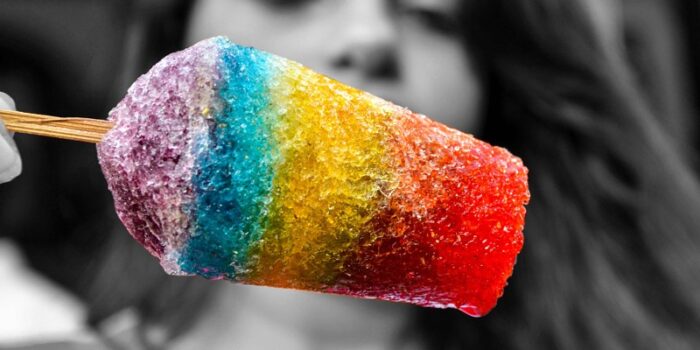
An ice-cold drink or a cool juice with ice cubes is all you need to chill out on a hot summer day.
But have you ever wondered who came up with the idea to put ice in our drinks? How did Indians have cold things or preserve food before refrigerators?
The story of how ice came to India is quite fascinating, and it all started as a business idea.
Before diving deep into how ice made its way to India, let’s first look at ice’s history around the world.
Ice has been used to cool and preserve food for thousands of years. But since there was no mode to freeze water artificially, people relied on naturally-formed ice in the mountains and water bodies during winter.
The first concept of chilled drinks, mostly wine, can be traced back to ancient Rome when emperors and nobility would get chunks of ice brought down from the mountains to cool their amphoras or tall jugs of wine. Similarly, the Mughal emperor Humayun in India began importing ice blocks from Kashmir in the 1500s. He would freeze fruit juice into a sorbet and have it as a summer treat. Saltpetre (potassium nitrate) was sprinkled on the ice to prevent it from melting.
In another part of the world, the Persians had also figured out a way to store ice in 400 BC. They built large containers with very thick walls that would insulate the ice inside and bury them in the ground to maintain the low temperatures.
India had very few places with naturally-formed ice. So Frederic Tudor decided to fill this gap in the 1800s.
Tudor was born into a wealthy American family in Boston. In the early 1800s, when his brother jokingly said that someone should take the ice from the pond next to their house and sell it in hot countries, Tudor concurred with the comment and decided to get into the ice business. He borrowed money from friends and arranged to ship his first ice package to the Caribbean islands in 1806. But this was the first time people had heard of someone wanting to ship ice, and they blatantly refused to take his cargo on their ships. Tudor was forced to buy his own ship for the journey. Sadly, nobody wanted to buy the ice when he reached the Caribbean as it was a new concept for people living in a hot place.

Frederic Tudor. Source: Wikipedia
Even though his first venture failed and put him in debt, Tudor didn’t give up. And by 1826, selling ice across the US brought him enough success to hire Nathaniel Jarvis Wyeth, a noted inventor. With Wyeth’s help, Tudor was able to modernise the process of ‘harvesting’ ice and getting more customers.
Tudor’s biggest customer came in the form of Samuel Austin, a trader who often did business in India. Austin knew that the British in India were struggling with the perennial heat and selling them ice would be a great business. He partnered with Tudor, loaded the ice on his ships and headed to Kolkata. On 12 May 1833, Tudor Ice Co.’s first shipment of 100 tonnes of ice landed in dusty, hot Kolkata and sold at three pence a pound – much cheaper than any other ice merchant.

Ice being harvested in Massachusetts in the early 1850s. Source: Wikipedia
News of cheap, good-quality ice from the US being sold in Kolkata reached Mumbai and Delhi too. The English and wealthy Indians (most of them Parsis) built ice houses to store ice, and Tudor’s business in India flourished. Thanks to his low prices, ice soon found its way into the homes of middle-class Indians too. Tudor’s ice empire in India grew for the next 20 years, making him over $2 million in profits. The ice houses in Mumbai, Kolkata and Chennai are still standing to this day.
In 1844, inventor and doctor John Gorrie invented the air conditioner, and soon after that, the ice-making machine. This effectively started the decline of the ice industry, including Tudor Ice Co. The refrigerator was invented in 1913, which brought the ice-selling business to a complete stop as people started making ice in their homes.
So, next time you add ice cubes to your drink, you know who to thank!
Madhavi is passionate about everything to do with books, art, literature, films, trivia and food. A former journalist, she believes that asking questions makes life interesting.